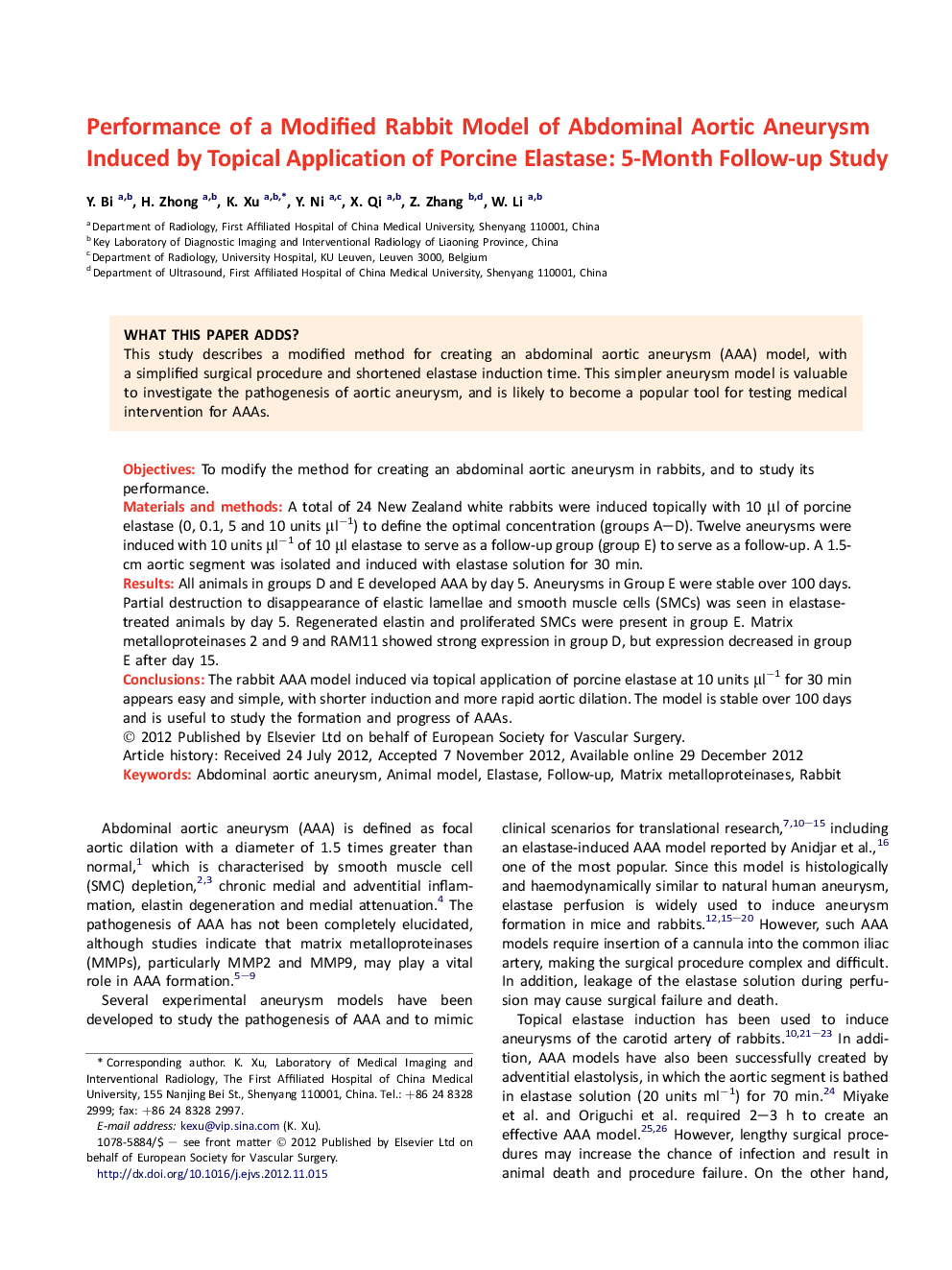| Article ID | Journal | Published Year | Pages | File Type |
|---|---|---|---|---|
| 2912240 | European Journal of Vascular and Endovascular Surgery | 2013 | 8 Pages |
ObjectivesTo modify the method for creating an abdominal aortic aneurysm in rabbits, and to study its performance.Materials and methodsA total of 24 New Zealand white rabbits were induced topically with 10 μl of porcine elastase (0, 0.1, 5 and 10 units μl−1) to define the optimal concentration (groups A–D). Twelve aneurysms were induced with 10 units μl−1 of 10 μl elastase to serve as a follow-up group (group E) to serve as a follow-up. A 1.5-cm aortic segment was isolated and induced with elastase solution for 30 min.ResultsAll animals in groups D and E developed AAA by day 5. Aneurysms in Group E were stable over 100 days. Partial destruction to disappearance of elastic lamellae and smooth muscle cells (SMCs) was seen in elastase-treated animals by day 5. Regenerated elastin and proliferated SMCs were present in group E. Matrix metalloproteinases 2 and 9 and RAM11 showed strong expression in group D, but expression decreased in group E after day 15.ConclusionsThe rabbit AAA model induced via topical application of porcine elastase at 10 units μl−1 for 30 min appears easy and simple, with shorter induction and more rapid aortic dilation. The model is stable over 100 days and is useful to study the formation and progress of AAAs.
